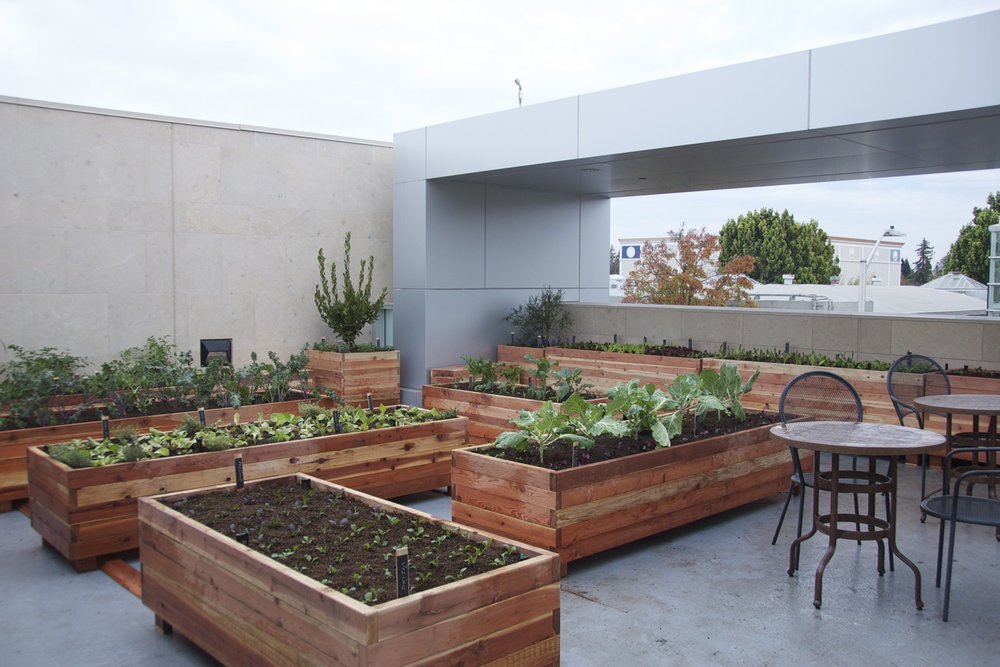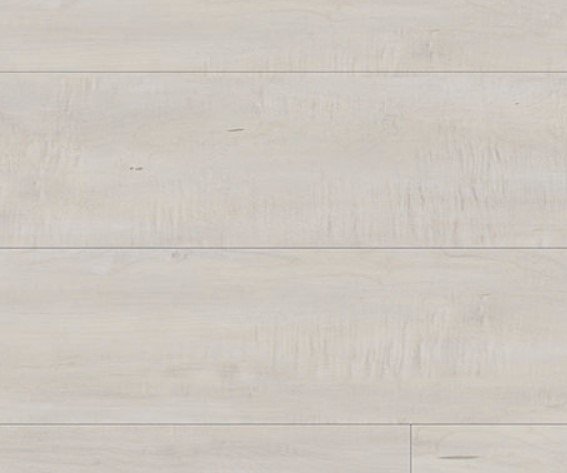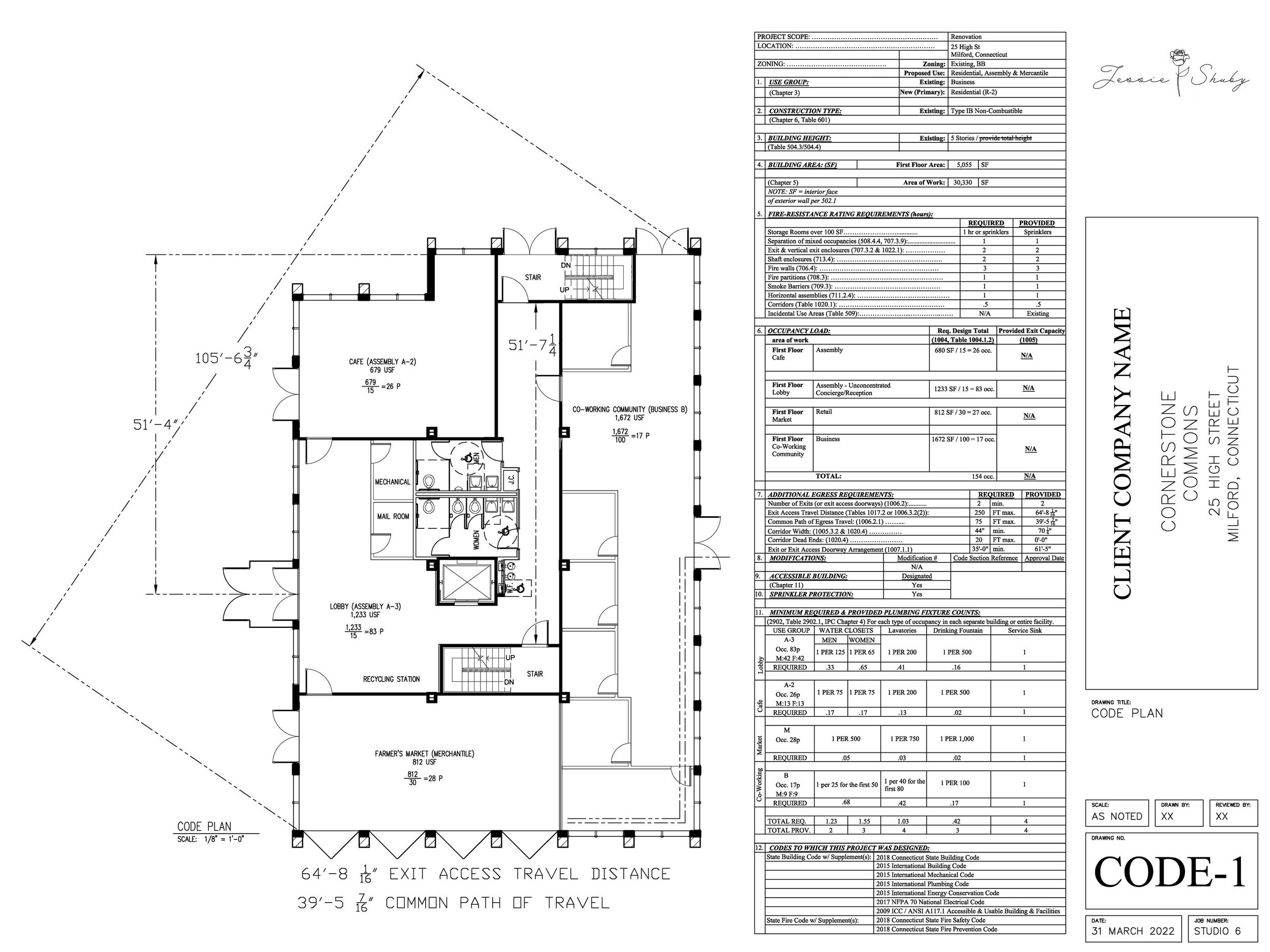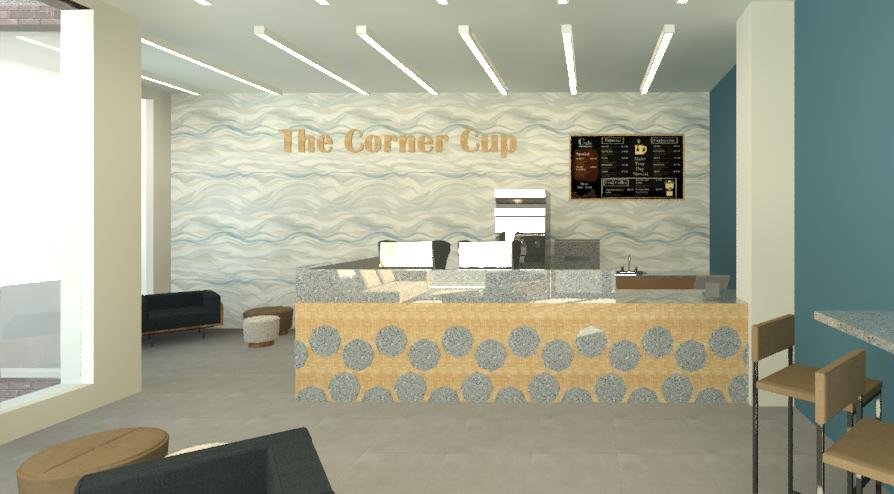
Mixed-Use Apartment Building
Cornerstone Commons
Individual Project
Project Description: The Milford Harbor building and site is slated to have commercial mixed-use space with retail, commercial, and service businesses on the first floor. The building site will include exterior public space. Residences are located on floors 2-5 to include a mix of, for example, studio/one or two-bedroom apartments. One penthouse is on the top floor and can have private access to the rooftop. The roof will include outdoor spaces for tenant use only. This is an adaptive reuse project with the goal of achieving LEED, Living Building Challenge, Well Building standard, and Living Building certifications.
Community Description: Cornerstone Commons is the hub of the community, focusing onenvironment, location, and engagement. Boasting the utmost biophilic experience while idolizing nourishment, equity, and beauty through accessible and universal design. The idea of space will be integrated by addressing individual community needs of personal, private, and social environments.
Location and place allow for the community to be collaborative and form connections with others. Cornerstone Commons is going to invite the public to take advantage of all that it has to offer, from the community garden and farmer’s market to participating in pop-up events held at the corner cup coffee shop. Collaboration and creativity of individuals will be encouraged to thrive when working in the co-working space, where individual professionals and smaller companies will be given the opportunity to rent office space within the facility. These types of social spaces will guide the engagement of Cornerstone Commons.
The outdoor space and rooftop terrace will become an oasis where individuals can escape from their day-to-day routine to focus on themselves and their mental health. Through the effects of biophilic design, these personal and private spaces will create an environment where areas of refuge can be found, while being immersed in pure nature.
Cornerstone Commons will transform the lifestyle of its community through healthy interior environments that will urge the creativity and engagement of individuals through the location and natural amenities it has to offer.
Milford Research
-
History - Then & Now
February 1, 1639, is the date the area then known as “Wepawaug” was purchased from Ansantawae, chief sachem of the Paugusset Tribe.
The settlers built a grist mill by the Wepawaug River in 1640, to take advantage of its water power.
By 1822, the town had grown large enough that residents in the northern and eastern sections of Milford chartered the Town of Orange.
During the next century and a half, the remaining section of Milford was known for shipbuilding, farming, and oystering.
Because of its location on Long Island Sound, during the later 19th century, Milford also became known as a beach resort for residents of New Haven and Bridgeport.
The city became host to several headquarters of multinational corporations, including the Schick Shaving company, and the headquarters for the Subway chain of fast-food restaurants. The US operations of BIC were headquartered in Milford, but in March 2008 moved most of its operations to Shelton. Milford Hospital has also developed into an important health care resource for the area. It has also become home to smaller national corporations such as K-Mart and Orchid Medical.

-
Ecology
The Connecticut Audubon Society was founded in 1898 by Mabel Osgood Wright, a pioneer in the American conservation movement. From the beginning, we have focused on conserving birds and their habitats in Connecticut, through science-based education and advocacy.
Coastal Center at Milford Point.
A total of 315 bird species have been seen at the Coastal Center.
Ospreys nest in the marsh.
Vulnerable species such as Piping Plovers and American Oystercatchers nest on the beaches.
Snowy Owls often spend the winter in the area.
The nearby waters of Long Island Sound and the Housatonic River are rich in oysters and clams.
The dune habitat supports rare plants.
Population of Purple Martins occupies a colony at the edge of the marsh.

-
Culture & Demographics
Milford celebrates its annual Oyster Festival, which serves as a combination of a typical town fair with a culinary celebration of the town’s location on historically shellfish-rich Long Island Sound.
Community spirit and “giving back” are a vital part of the Milford way of life. Fortunate to be the home of multiple service clubs and organizations, Milford rarely will let a week go by where the community is not invited to participate in an event.
The Milford Chamber’s “Festival of Lights” brightens holidays when the city “Green” is illuminated with over 50,000-holiday lights, shopping, and entertainment.
The Devon Rotary brews up an Oktoberfest complete with Bavarian food and music.
With a 2020 population of 53,289, it is the 12th largest city in Connecticut and the 745th largest city in the United States.
Milford is currently growing at a rate of 0.09% annually and its population has increased by 3.94% since the most recent census, which recorded a population of 51,271 in 2010.
The average household income in Milford is $118,018 with a poverty rate of 4.71%. The median rental costs in recent years come to $1,580 per month, and the median house value is $312,500.
The median age in Milford is 45.5 years, 42.1 years for males, and 47.8 years for females

Design Strategies
The Psychology of Home
-
Understanding Personal Space
-In intimate moments we will be up to 18” apart
-In personal situations, we’re 18 inches to 4’ apart
-In social situations, the distance grows from 4’ to 12’
-In formal situations, we’re over 12’ apart
-
Establishing Privacy
There are two types of privacy: audio and visual. It is mentally distracting when you can see and hear others, and being distracted is very different from needing privacy, from a mental health perspective.
-
Crowding
Crowding is a personal perception; basically, we feel crowded when we believe that there are too many people nearby. Though it is primarily an issue of perception, crowding causes very real anxiety.
Conversely, being in a space that is perceived as too open and empty can be just as upsetting as being in one that seems too crowded
Concept Work
Incorporation of Design Strategies

Community Flow Chart

Criteria Matrix

Node Map of Milford

Diagram of Main Floor Showing Areas of Private (Blue) Personal (Green) and Social (Purple) spaces

Prototypical Sketch of Cafe
Inspiration Images













Design Process
Furniture, Finishes, and Material Selection


































Final Renderings
Plans drawn in AutoCAD, Modeled In Revit, Renderings edited in Photoshop

Apartment Floor Plan

Roof Terrace Floor Plan

Codes Plan for Main Floor

Main Floor Dimension Plan

Apartment Isometric

apartment Living Space Rendering

Apartment Furniture Plan - Rendered

Main Floor - Co-Working Community Rendering

Main Floor - Coffee Shop Lounge Area Rendering

Main Floor - Coffee Shop Service Counter Rendering

Main Floor - Farmer's Market Rendering

Main Floor Furniture Plan - Rendered

Main Floor - Tenant Reception Desk Rendering

Main Floor - Lobby Lounge Area Rendering

Roof Terrace Furniture Plan - Rendered

Roof Terrace Rendering

Roof Terrace Rendering

Roof Terrace Isometric

Site Plan Isometric

Site Plan Isometric

Site Plan - Rendered

Site Plan






